This Man’s Awesome ‘Farm-on-Terrace’ Has Over 1000 Plants & 40 Bonsai Trees!
One fine day in 1989, the municipality decided to transform Ghulam’s dream garden into a commercial market. Trees were cut ruthlessly, and plants were laid down by bulldozers.

Tunku A Jaleel, a freedom fighter from Indonesia worked closely with the Indian freedom fighters in Kolkata (erstwhile Calcutta) back in the 40s. During his stay in the nearby villages of Somariya, he mentioned his desire to learn about medicines. His fellow freedom fighters suggested that he visit the local government hospital compounder Abdul Zabbar Khan, who had knowledge of medicines and was known in the village as Dr Khan.
Dr Khan had given out his ancestral land on lease for the government hospital and also worked there as a compounder. Apart from this, he was a passionate gardener who had used the remaining land around the hospital to build a nursery.
When Tunku visited him, he was so impressed by his passion that he decided to stay with Dr Khan’s family and learn. While Dr Khan taught him about medicines, Tunku introduced Dr Khan to Bonsai, an art that he carried from Indonesia.
Soon, Dr Khan had various trees grown in small pots in his nursery which became the centre of attraction for the sub-divisional officers.
Tunku grew attached to Dr Khan and married his eldest daughter. After Indonesia gained freedom on 17th August 1945, Tunku flew back to his country with his family, but the art of Bonsai remained with the Khans for generations to come.
Today, Dr Khan’s grandson, Ghulam Sarwar Khan, grows over thousands of plants, vegetables, flowers and trees on his 5,500 sq ft terrace garden where over 40 trees are Bonsai.
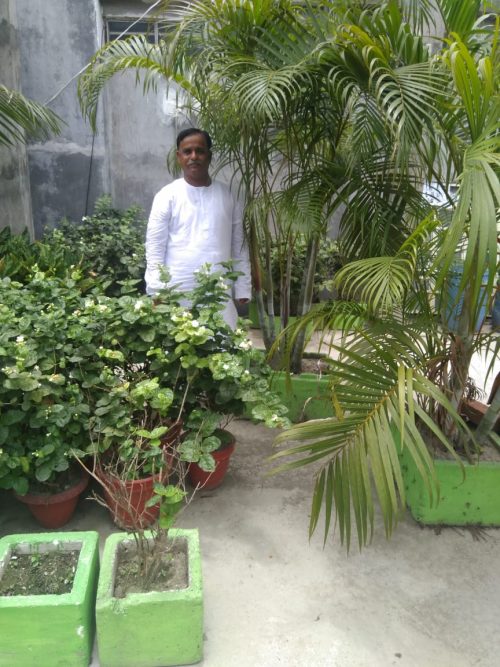
The art was naturally passed to Ghulam through his grandfather and then his father, who was a passionate gardener too. While telling his story to The Better India, he says, “My father was a sanitation officer at the government hospital. He would get transferred to a new place every few years. But it was a routine to plant trees and look after them wherever we went.”
In 1970, when Ghulam was eight years old, the family shifted to Purnia, in Bihar.
“There was a large, open space around our house. I was thrilled when I tried to imagine how many trees we could grow there,” he says.
Ghulam began sowing seeds of vegetables, fruits and flowers along with his two siblings. In ten years, this garden had become his prized possession. Ghulam had completed his graduation and was working at the Life Insurance Corporation. He introduced his kids to the garden and shared his knowledge with them.
Ghulam shares, “The routine was same all these years. We would get up at 4 am, do a quick workout and go straight to the garden to clean it, water it and all possible things to maintain it, but then everything changed in 1989.”
Commercialisation was the norm of this era. Trees were cut rapidly to be replaced with new buildings. One fine day in 1989, the municipality decided to transform Ghulam’s dream garden into a commercial market. Trees were cut ruthlessly, and plants were laid down by bulldozers.
Ghulam was devastated!
“I didn’t know what to do. Some of them were so dear to me! I was almost crying,” he says.
This was when his father suggested that he pull up as many flower plants as he could and plant them again on the terrace. He was also asked to get the branches of the trees which could not be saved. Thus, Ghulam embarked on the journey of setting up a terrace garden.
He was taught the art of grafting and finally the art of Bonsai to preserve the fruits of his year-long hard work.
Today, Ghulam Sarwar has over thousands of plants and trees on his terrace garden. He only needs to get soil and rotten cow dung from a nearby village to plant his favourite fruits, vegetables and flowers in pots and thermocol boxes.
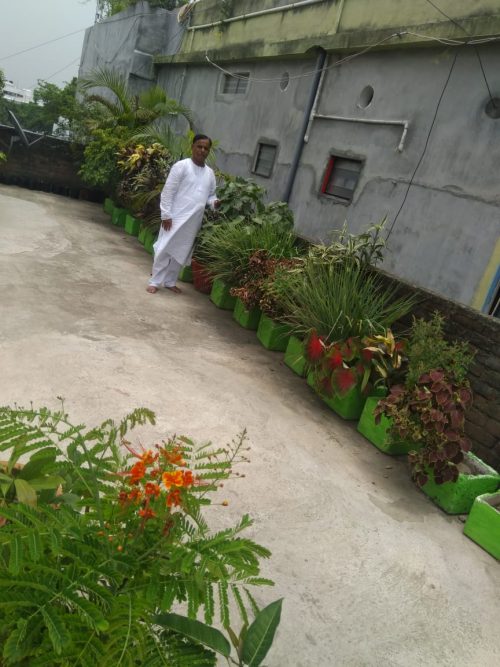
This costs him approximately Rs 2,000 per trolley. Ghulam gets these thermocol boxes from the local fish market where fish are transported in them, and the boxes are thrown away after.
“These empty boxes are of no use to the fishermen. So I buy it from them at Rs 20-25. They are really good to grow plants as they are light-weight as compared to the mud pots and are sustainable too,” he explains.
He urges folks living in cities to grow plants equal to the number of their family members. He also proposes to the government that while designing any residential or commercial buildings, they must insist on having a green area which can produce as much oxygen as required by the people who will live in those building.
“I have heard that people have to carry oxygen cylinders while walking on the roads in China. This can soon be the situation in India too if we still think that it is only the job of farmers to grow plants and trees,” observes Ghulam.
He claims that an air purifier can clean the air only up to 98% whereas planting a palm tree or money-plant will purify 100% of the surrounding air.
Ghulam has planted at least 40 trees using the Bonsai method on his terrace, which include palm, banyan, custard apple and mosambi among others.
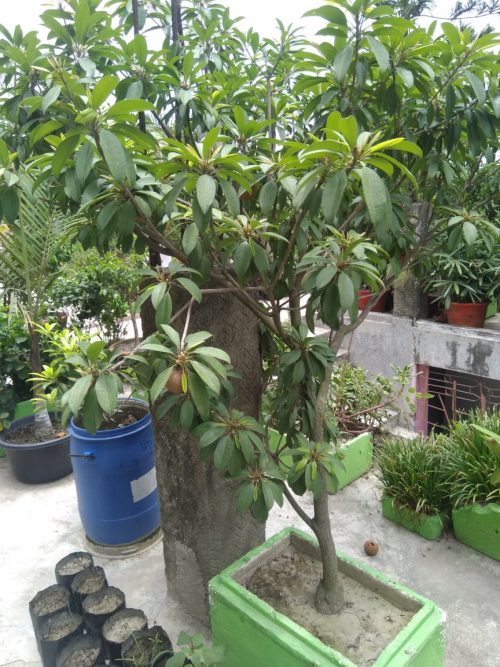
He thanks his Uncle Tunku who shared this knowledge with his family, and ensures that he passes it on to the next generation.
Ghulam, who is always happy to share his produce and his plants with his neighbours for free would also be glad to share them with you.
To learn grafting or the art of Bonsai or to get a plant from Ghulam Sarwar Khan, contact him at [email protected] or call him on 9934446148.
Have a look at the beautiful terrace farm –
Here are more pictures of the garden-
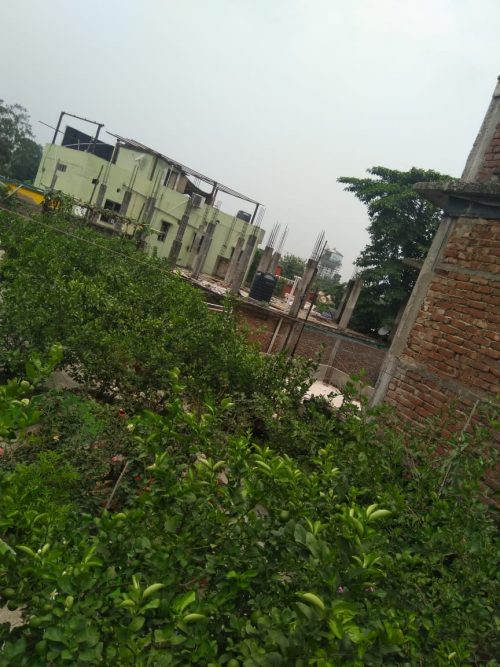
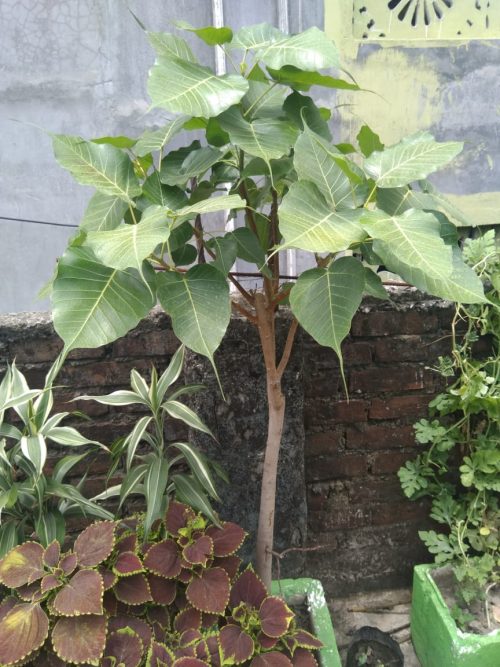
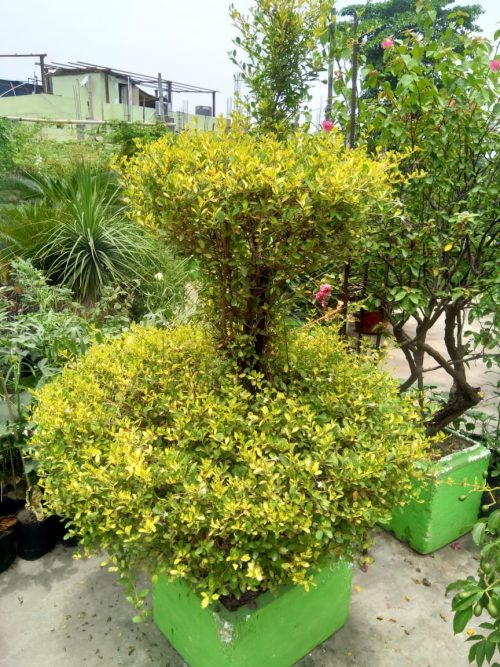


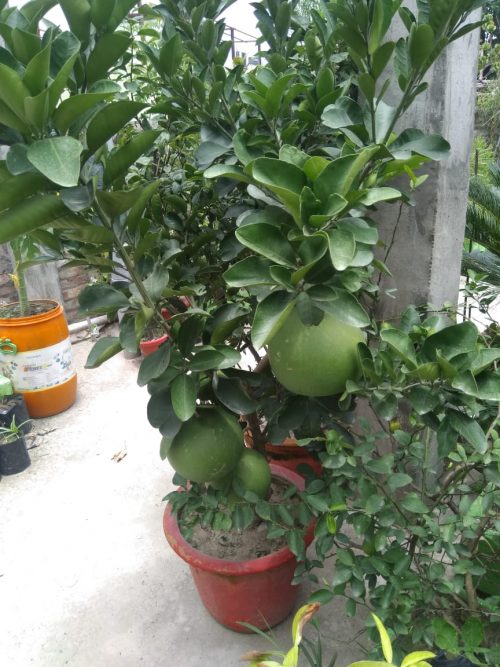
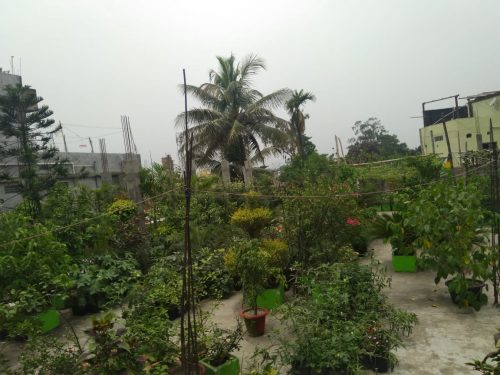


(Edited by Shruti Singhal)
Like this story? Or have something to share?
Write to us: [email protected]
Connect with us on Facebook and Twitter.
NEW: Click here to get positive news on WhatsApp!
If you found our stories insightful, informative, or even just enjoyable, we invite you to consider making a voluntary payment to support the work we do at The Better India. Your contribution helps us continue producing quality content that educates, inspires, and drives positive change.
Choose one of the payment options below for your contribution-
By paying for the stories you value, you directly contribute to sustaining our efforts focused on making a difference in the world. Together, let’s ensure that impactful stories continue to be told and shared, enriching lives and communities alike.
Thank you for your support. Here are some frequently asked questions you might find helpful to know why you are contributing?


This story made me
-
97
-
121
-
89
-
167











